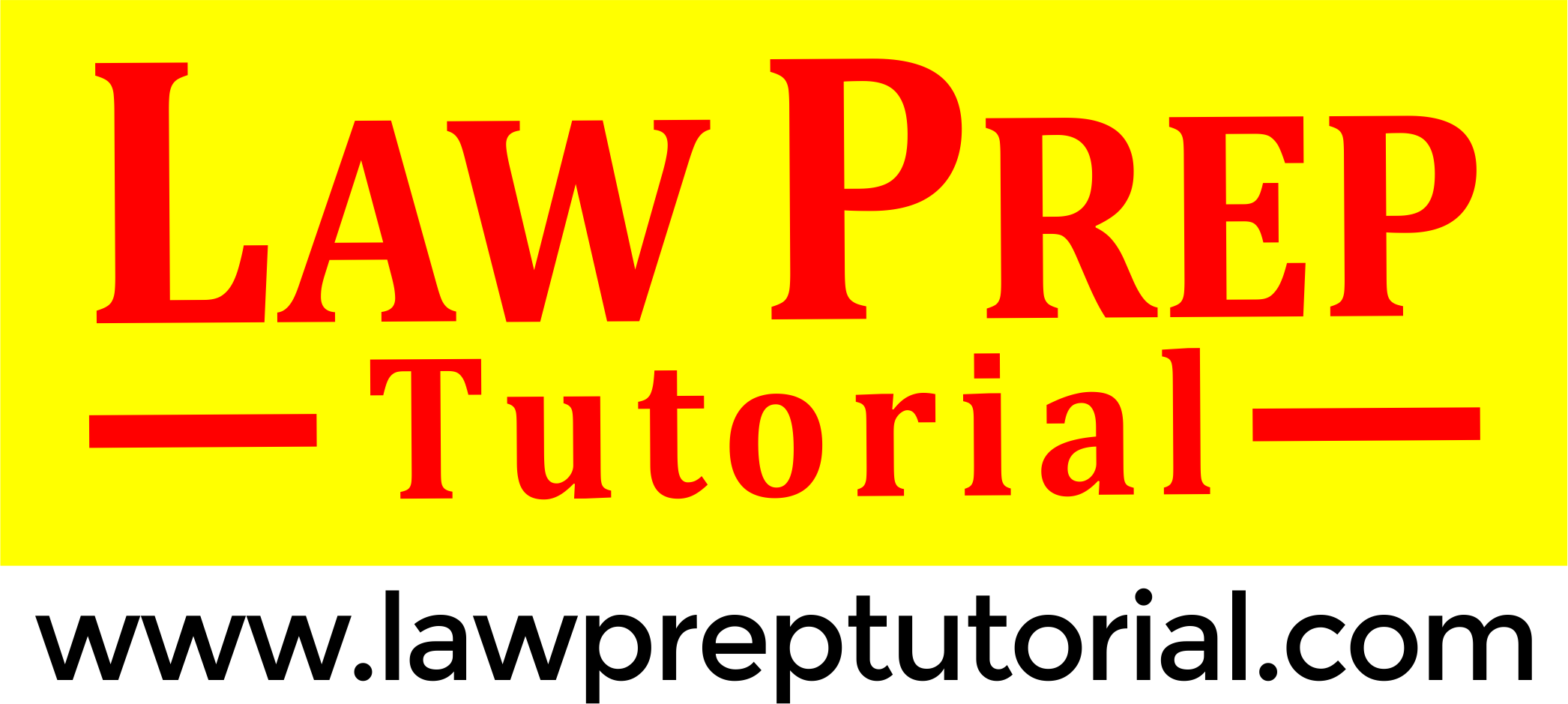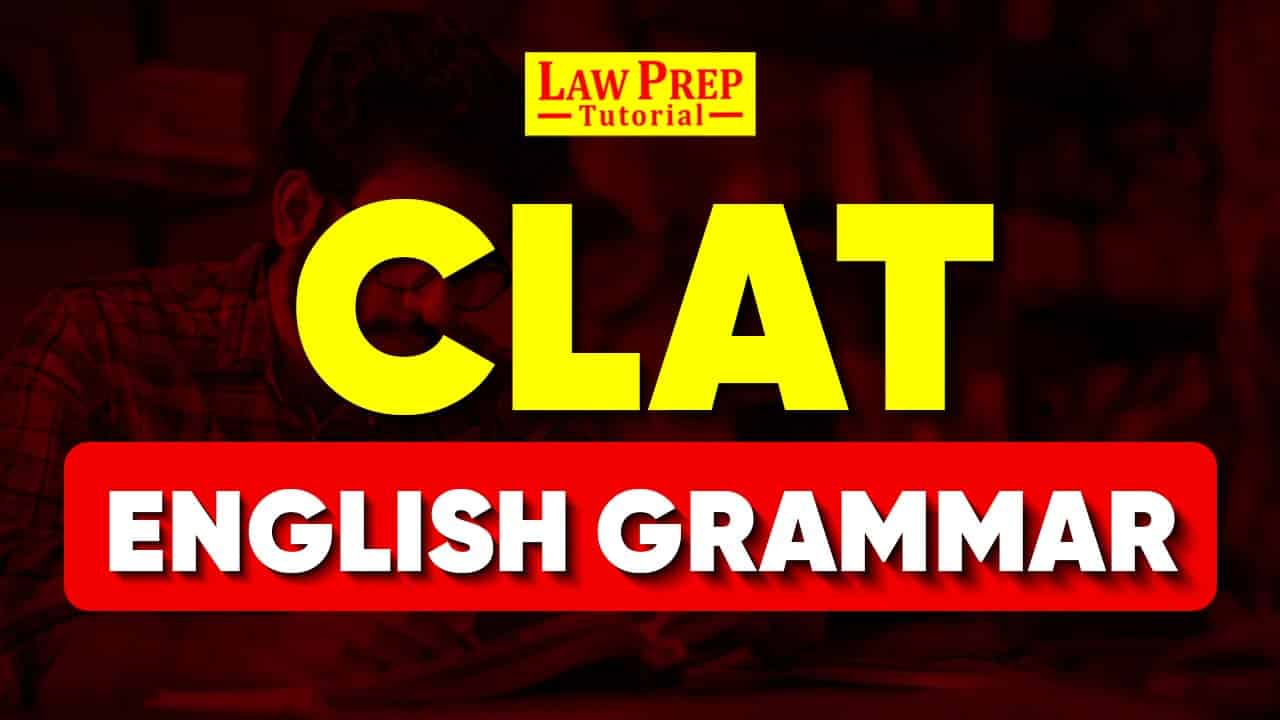Grammar is the backbone of any language, and in exams like CLAT, even the tiniest mistake can cost you marks. From subject-verb agreement to spotting errors in sentences, English grammar for CLAT plays a crucial role.
Without a solid understanding of basic grammar rules, you might find yourself struggling with what seem like simple questions.
Hence, we have shared here everything you need to know about CLAT English grammar, offering practical tips and insights to help you tackle grammar questions with confidence and accuracy.
Upcoming CLAT Exams:
English Grammar in CLAT: Overview
In the CLAT English Language section, grammar plays a crucial role in testing a candidate’s understanding of the structure and rules of the English language.
Grammar questions in the CLAT exam focus on areas such as sentence correction, error spotting, and fill-in-the-blanks, assessing your ability to identify and correct common grammatical mistakes.
These questions not only check your knowledge of grammar but also your ability to apply it correctly in real-time, under exam conditions.
You can expect around 8-10 grammar-based questions in the CLAT English section. The grammar topics are tested through multiple-choice questions.
| Aspect | Details |
| Role of English Grammar in CLAT | Tested through sentence correction, error spotting, and fill-in-the-blanks questions |
| Approximate Number of Questions | 8-10 grammar-based questions within the 22-26 questions in the English section. |
| Types of Grammar Topics Covered | – Parts of Speech – Subject-Verb Agreement – Tenses – Modifiers – Articles – Phrasal Verbs – Prepositions – Sentence Structure – Parallelism – Error Spotting |
Checkout: CLAT English Syllabus
CLAT English Grammar Syllabus
Find the list of topics covered in English grammar syllabus of CLAT 2025:
| Topic | Subtopics |
| Parts of Speech | – Nouns – Pronouns – Verbs – Adjectives – Adverbs – Conjunctions – Prepositions |
| Tenses | Simple, Continuous, Perfect, Perfect Continuous |
| Voice | Active and Passive Voice |
| Subject-Verb Agreement | Singular and Plural subjects and their verb agreement |
| Pronoun Usage | Correct pronoun reference, antecedent agreement, reflexive pronouns |
| Modifiers | Correct placement of adjectives and adverbs, avoiding misplaced modifiers |
| Articles | Usage of ‘a’, ‘an’, ‘the’ |
| Determiners | Usage of determiners like ‘some’, ‘this’, ‘those’ |
| Phrasal Verbs | Understanding phrasal verbs and their meanings in context |
| Prepositions | Preposition usage in sentences (e.g., ‘on’, ‘in’, ‘at’) |
| Sentence Structure and Types of Sentences | Simple, Compound, Complex sentences, sentence rearrangement |
| Parallelism | Maintaining parallel structure in lists or comparisons |
| Error Spotting | Identifying and correcting grammatical errors in sentences |
Download complete CLAT English Syllabus PDF
Let’s discuss the CLAT English grammar syllabus in detail:
1. Parts of Speech
Understanding the basic parts of speech is essential as they form the building blocks of sentence construction. The topics include:
- Noun
- Pronoun
- Verbs
- Adjectives
- Adverbs
- Conjunctions
- Prepositions
You’ll encounter questions that test your ability to identify and correctly use these parts in sentences.
2. Tenses and Verb Forms
Tenses help convey the time of an action or event. You need to be familiar with all forms of tenses (simple, continuous, perfect, and perfect continuous) to ensure correct verb usage in both active and passive voices.
These are generally tested in sentence correction and error spotting.
3. Subject-Verb Agreement
A common error tested in CLAT English grammar is ensuring the subject and verb in a sentence agree in number.
For example, singular subjects take singular verbs, while plural subjects take plural verbs. Mastery of this concept is vital for sentence correction and spotting errors.
4. Pronoun Usage
Pronouns are used to replace nouns, and knowing how to use them correctly is essential.
Topics like antecedent agreement, correct pronoun reference, and reflexive pronouns are frequently tested in the CLAT English grammar section.
5. Modifiers
Modifiers (adjectives and adverbs) are used to describe or qualify other words in a sentence. Questions on modifiers often test whether they are placed correctly, as misplaced or dangling modifiers can change the meaning of a sentence.
6. Articles and Determiners
Articles (“a,” “an,” “the”) and other determiners (such as “some,” “many,” “this,” “those”) are small but significant components of grammar.
Their correct usage is important, especially when filling in blanks or correcting sentences in CLAT English grammar.
7. Phrasal Verbs
Phrasal verbs consist of a verb and one or more particles (e.g., “look up,” “run out”). They can be tricky because their meanings often differ from the individual meanings of the words. These are often tested through fill-in-the-blank questions.
8. Prepositions
Prepositions show relationships between nouns or pronouns and other words in a sentence.
You need to be familiar with preposition usage (e.g., “on,” “in,” “at”) and how they function in context, as this is frequently tested in CLAT grammar questions.
9. Sentence Structure and Types of Sentences
Questions on sentence structure will test your understanding of the different types of sentences (simple, compound, complex). Recognizing the correct sentence structure is essential for solving questions on sentence correction and rearrangement.
10. Parallelism
Parallel structure (or parallelism) means that all elements in a sentence should maintain a consistent pattern. It is commonly tested in CLAT sentence correction questions, where candidates are asked to spot inconsistencies in structure.
Must Know for Every CLAT Aspirant:
| CLAT Eligibility Criteria | CLAT Exam Pattern |
| CLAT Age Limit | CLAT Marking Scheme |
| How to Prepare for CLAT? | CLAT Preparation Books |
Tips to Master CLAT English Grammar 2025
Find the most effective tips to prepare for CLAT English grammar:
- Understand Grammar Rules Thoroughly: Instead of just memorizing rules, ensure you understand their application. Practice using these rules in sentences to internalize them.
- Practice Daily: Dedicate at least 15-30 minutes every day to grammar exercises. Consistent practice is key to mastering grammar concepts.
- Use Grammar Books: Refer to trusted grammar resources like Wren & Martin’s High School English Grammar and Composition for in-depth explanations and exercises. It’s a great book to solidify your foundational grammar knowledge.
- Solve Previous Year Papers: Review grammar questions from previous years questions papers of CLAT to understand the pattern and difficulty level. Practice with these papers will help you become familiar with the types of questions asked.
- Focus on Common Error Patterns: Identify the grammar topics you frequently struggle with (e.g., tenses, prepositions, or subject-verb agreement). Spend extra time reinforcing these areas.
- Take Mock Tests: CLAT mock tests help simulate the actual exam experience. Time yourself while solving grammar questions to improve both speed and accuracy.
- Revise Frequently: Revisiting grammar rules regularly will help you retain them. Create a revision schedule and make sure to cover all key topics before the exam.
Check revision tips for CLAT.
- Pay Attention to Detail: Small errors in subject-verb agreement or tense usage can cost you marks. Focus on identifying minor grammatical errors during your practice.
- Apply Grammar in Writing: Practice writing essays or short paragraphs, focusing on correct grammar usage. This not only helps in spotting errors but also reinforces correct sentence structures.
CLAT English Grammar Questions
Below are some sample English grammar questions for CLAT 2025:
Q1. Identify the grammatical error in the sentence: “Neither of the boys are responsible for the accident.”
A) Neither
B) are
C) for
D) No error
Answer: B) “are” (The correct form is “is,” as “Neither” is singular.)
Q2. Choose the correct version of the sentence: “She has been living in Mumbai since five years.”
A) She has been living in Mumbai for five years.
B) She has been living in Mumbai from five years.
C) She has been living in Mumbai since five years.
D) She has been living in Mumbai over five years.
Answer: A) “She has been living in Mumbai for five years.”
Q3. Choose the correct word(s) to complete the sentence: “The committee has issued its report, but not everyone is happy ____ it.”
A) with
B) by
C) from
D) on
Answer: A) “with”
Q4. Identify the correct sentence:
A) Either of the girls are willing to take responsibility.
B) Neither of them know the answer.
C) Each of the students has submitted their assignment.
D) Everyone in the class is ready for the test.
Answer: D) “Everyone in the class is ready for the test.” (The others have subject-verb agreement errors.)
Important Resources After CLAT Exam:
Mistakes to Avoid in CLAT English Grammar Questions
If you are preparing for CLAT 2025 or CLAT 2026, make sure to avoid these mistakes in CLAT English grammar:
- Ignoring Subject-Verb Agreement: Failing to match singular/plural subjects with the correct verb form.
- Overlooking Tense Consistency: Using inconsistent tenses within a sentence or passage.
- Misplacing Modifiers: Placing adjectives or adverbs incorrectly, leading to awkward or unclear sentences.
- Confusing Homophones: Misusing words like “there” and “their,” “its” and “it’s,” or “your” and “you’re.”
- Misusing Pronouns: Incorrectly matching pronouns with their antecedents or using ambiguous pronoun references.
- Incorrect Preposition Usage: Using the wrong prepositions in phrases, such as “in” instead of “on” or “at.”
- Forgetting Parallelism: Not maintaining consistent structure when listing or comparing ideas (e.g., mixing verb forms like “swimming, to run, and biking”).
- Neglecting Article Usage: Incorrectly using or omitting articles like “a,” “an,” or “the.”
- Rushing Through Error Spotting: Missing simple errors due to rushing or not reading sentences carefully.
- Overthinking Simple Questions: Doubting yourself on straightforward questions and making unnecessary changes.
Best Books for CLAT English Grammar
Refer to these English grammar books for CLAT preparation:
1. High School English Grammar and Composition by Wren & Martin
A comprehensive book that covers all essential grammar topics with detailed explanations and exercises, making it perfect for mastering grammar concepts for CLAT.
2. Word Power Made Easy by Norman Lewis
While focused on vocabulary, this book helps build a strong foundation in word usage, which indirectly improves grammar and sentence construction.
3. English is Easy by Chetan Anand Singh
Known for its straightforward and student-friendly approach, this book simplifies the learning process for both vocabulary and grammar.
Check the best books for CLAT preparation (for all subjects).
Free CLAT Study Material for You:
| CLAT Previous Year Papers PDF | CLAT Sample Papers |
| CLAT Syllabus PDF | Free CLAT Coaching |
| CLAT Current Affairs | CLAT Topper Interviews |
| CLAT Videos | CLAT Mock Tests |
FAQs About English Grammar for CLAT
Grammar is crucial in the CLAT English Language section as it tests your ability to spot and correct errors in sentences, which affects your overall score.
Common questions include error spotting, sentence correction, fill-in-the-blanks, and cloze tests.
The grammar questions in CLAT are of moderate difficulty and focus on basic concepts like tenses, subject-verb agreement, and pronoun usage.
Yes, with focused preparation on key grammar topics and consistent practice, you can improve your grammar skills in a short time.
Yes, phrasal verbs are tested through fill-in-the-blank or sentence correction questions.
Practice by solving exercises from grammar books, using grammar apps, and taking mock tests focused on grammar.
Yes, solving previous years’ papers gives you an idea of the types of grammar questions asked in CLAT.
Yes, reading newspapers like The Hindu and The Indian Express helps improve your understanding of sentence structure and grammar in real-world contexts.
Mock tests are crucial as they simulate exam conditions and help you practice time management while improving accuracy.
Yes, idioms and phrases may appear in fill-in-the-blanks or sentence correction questions, so familiarize yourself with commonly used ones.
Free Previous Year Papers of CLAT
| CLAT 2025 Question Paper | CLAT 2024 Question Paper |
| CLAT 2023 Question Paper | CLAT 2021 Question Paper |
| CLAT 2020 Question Paper | View All (Past 17 Years) |
Important CLAT Questions for Practice:



